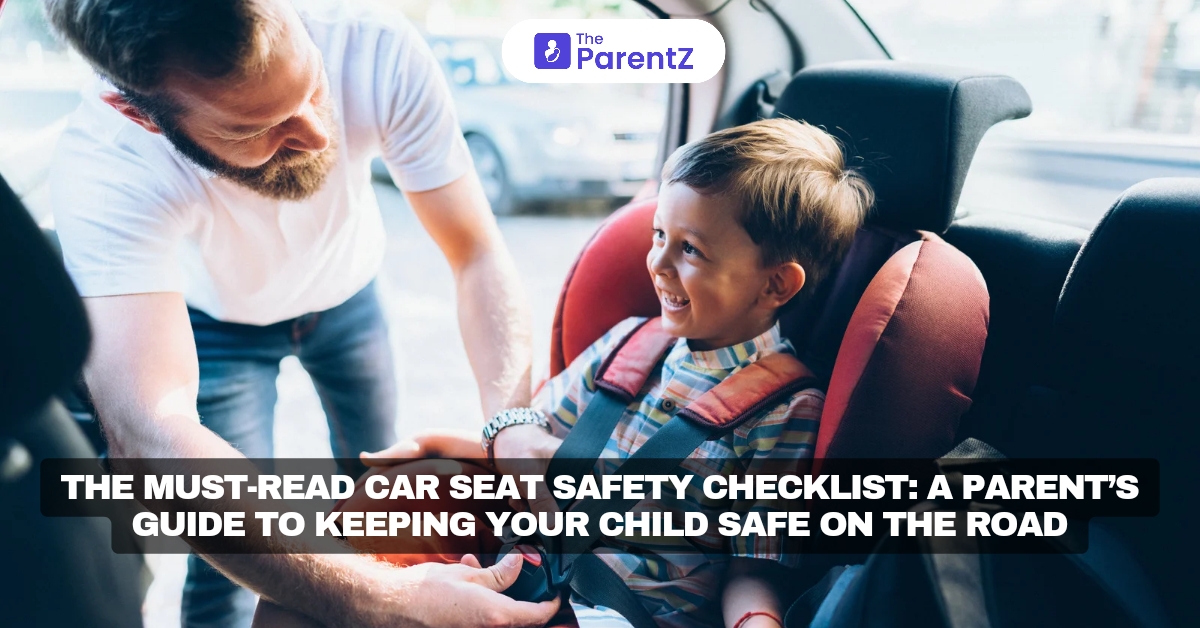As a parent in India, ensuring the safety of your child while traveling is paramount. With the rising number of vehicles on the roads and the unpredictable traffic conditions, car seat safety has become more crucial than ever. However, many parents are still unaware of the importance of using car seats or the specific guidelines that should be followed according to Indian laws.
Comprehensive checklist for Car Seat Safety
This comprehensive checklist will guide you through the essential steps to ensure your child's safety in a car, based on the latest Indian rules and regulations.
1. Understanding the Importance of Car Seats
In India, road accidents are one of the leading causes of injuries and fatalities. While seat belts are mandatory for adults, the importance of car seats for children is often overlooked. Car seats are specifically designed to protect infants and young children in the event of a crash. They reduce the risk of injury by distributing the force of impact across the strongest parts of the body and keeping the child securely in place.
2. Know the Indian Car Seat Regulations
As of now, India does not have stringent laws mandating the use of car seats, unlike many Western countries. However, the Motor Vehicles Act 1988 and the Central Motor Vehicles Rules (CMVR) do require that children under the age of 12 must wear seat belts or be seated in child seats when traveling in a car. The law also mandates that children below 14 years should sit in the rear seat of the vehicle.
While the enforcement of these laws is still in its nascent stages, it is vital for parents to take the initiative in ensuring their child's safety.
3. Choosing the Right Car Seat
Selecting the correct car seat for your child is the first step towards ensuring their safety. Car seats come in different types, and the choice depends on the child’s age, weight, and height.
- Infant Car Seats: These are designed for newborns and babies up to 12 months old, weighing up to 10 kg. They should always be installed rear-facing, as this position offers the best protection for a baby’s head, neck, and spine.
- Convertible Car Seats: These seats can be used in both rear-facing and forward-facing positions. They are suitable for children from birth up to 4 years old, weighing between 10 to 18 kg. It is advisable to keep the seat in a rear-facing position for as long as possible.
- Booster Seats: These are for older children, typically between 4 to 12 years, weighing between 18 to 36 kg. Booster seats ensure that the car’s seat belt fits properly over the child’s shoulder and lap.
Ensure that the car seat you choose is certified and meets safety standards. Look for labels such as ECE R44/04 or i-Size (R129), which are internationally recognized safety standards.
4. Proper Installation of Car Seats
A car seat is only effective if it is installed correctly. According to studies, over 70% of car seats are not installed properly, which can severely compromise their safety. Here’s how to ensure a secure installation:
- Read the Manual: Both the car seat and vehicle manuals should be read carefully. They contain specific instructions on how to install the car seat properly.
- Rear-Facing is Safer: For infants and toddlers, always install the car seat in a rear-facing position. This is the safest position and is recommended until the child outgrows the seat's weight and height limits.
- Check the Seat Belt or ISOFIX: The car seat should be tightly secured using the car’s seat belt or ISOFIX anchors. There should be no slack, and the seat should not move more than an inch from side to side or front to back.
- Angle Adjustment: Ensure that the car seat is at the correct angle to prevent the child’s head from flopping forward. Many car seats come with indicators to help you get the angle right.
- Harnessing Your Child: The harness straps should be snug and lie flat against your child’s body. The chest clip should be at armpit level, and you should not be able to pinch any excess strap material.
5. Positioning the Car Seat
The safest place to install a car seat is in the back seat, away from active airbags. The middle of the back seat is often considered the safest spot because it is furthest from any potential impact points.
However, if you have multiple children, placing them all in the back seat may not be possible. In such cases, position the youngest child in the middle and older children on the sides.
6. Regular Maintenance and Checks
A car seat is a long-term investment in your child’s safety. Regular maintenance and checks are essential to ensure it continues to function effectively.
- Check for Recalls: Occasionally, car seat manufacturers may issue recalls for certain models due to safety concerns. Register your car seat with the manufacturer to receive updates.
- Inspect for Wear and Tear: Regularly check the car seat for any signs of wear and tear, especially in the harness and buckles. Replace the seat if you notice any damage.
- Avoid Using Second-Hand Seats: It’s tempting to save money by using a second-hand car seat, but this is risky. Car seats have expiration dates, and a seat that has been in a crash may have hidden damage.
7. Setting a Good Example
Children learn by observing their parents. By always wearing your seat belt and ensuring that everyone in the car does the same, you set a good example for your child. Make car safety a family priority.
8. Educating Others
Car seat safety is not just a personal responsibility; it’s a community effort. Educate family members, friends, and caregivers about the importance of using car seats. Share your knowledge and encourage them to follow safety guidelines.
9. Planning Long Journeys
If you’re planning a long journey, make sure to plan for regular breaks. Long periods in a car seat can be uncomfortable for a child, and breaks will allow them to stretch and move around. Also, ensure that the car seat is properly installed before starting your journey.
10. Understanding the Limitations
While car seats significantly reduce the risk of injury in an accident, they are not a guarantee of absolute safety. It is essential to drive responsibly, avoid distractions, and follow traffic rules to minimize the chances of an accident.
Conclusion
Car seat safety is a vital aspect of protecting your child on the road. Although India’s laws on car seats are still evolving, taking proactive steps to ensure your child is safely secured in a car seat can make all the difference in the event of an accident. By following this checklist, you are investing in your child’s safety and well-being, making every journey a safer experience.









Be the first one to comment on this story.